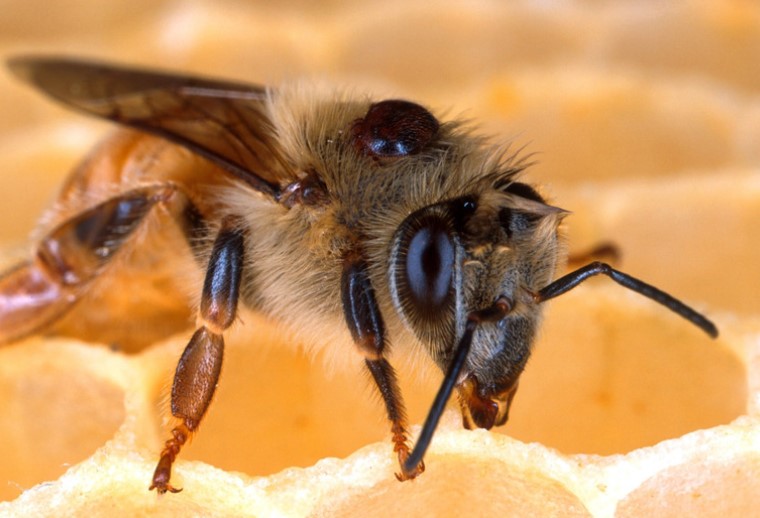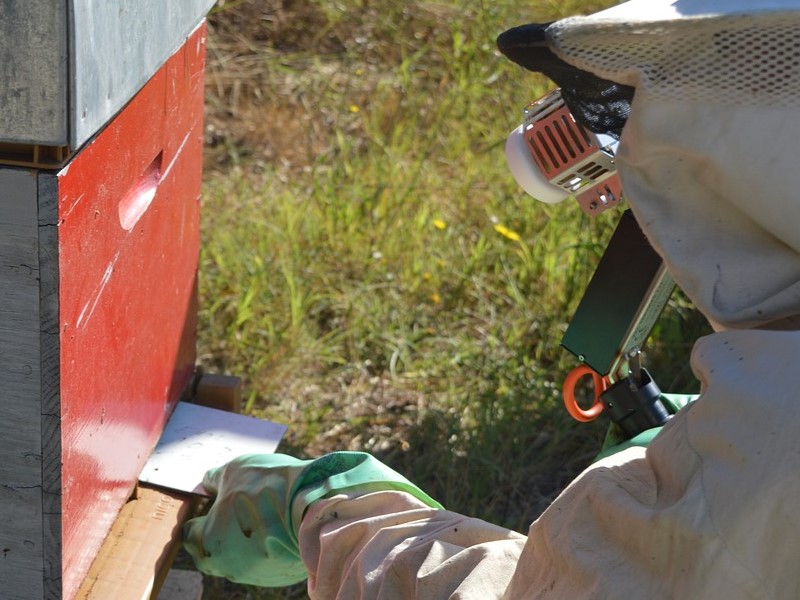Beekeeping may be an age-old practice that has existed since time immemorial, but it still has its share of difficulties and challenges. Controlling mite infestations ranks high on the list of concerns for almost all beekeepers worldwide.
Varroa mites significantly threaten bee colonies, weakening them and potentially leading to colony collapse. However, with proactive management strategies and the right beekeeping equipment for mite control, beekeepers can effectively eliminate mite populations and safeguard their hives.
Table of Contents:
Understanding the Threat of Varroa Mites
Varroa destructor, more commonly known as the varroa mite, is a parasitic mite that feeds on the bodily fluids of adult bees and developing broods. This parasitic relationship weakens the bees and can transmit different viruses, jeopardizing the entire colony’s health.

The varroa mite is a parasitic mite that feeds on the bodily fluids of adult bees. It’s essential to have the right beekeeping equipment for mite control to eliminate the mites without compromising the bee population.
When left untreated, Varroa mite infestations can destroy bee populations and compromise agricultural ecosystems that rely on pollination.
Importance of Mite Control in Beekeeping
Effective mite control is essential to maintain healthy bee colonies and ensure productivity. By mitigating Varroa mite infestations, beekeepers can reduce colony losses, preserve genetic diversity within bee populations, and support the overall health of their bees. Healthy bee colonies are also better equipped to fulfill their critical role in pollinating crops and sustaining ecosystems.
Main Beekeeping Equipment for Mite Control
The following are some of the vital beekeeping equipment for mite control:
Varroa Mite Monitoring Tools
Regular monitoring is crucial for early detection of mite infestations. Different tools, such as sticky boards, alcohol washes, or powdered sugar rolls, can all be used to evaluate mite levels within bee colonies accurately.
Integrated Pest Management (IPM) Strategies
IPM involves combining multiple approaches to manage Varroa mite populations sustainably. These may include cultural practices to disrupt mite reproduction cycles, such as brood interruption or drone brood removal.
Chemical Treatments
Even though chemical treatments should be used carefully to avoid resistance and minimize harm to the bees, they can effectively control mite populations when other methods don’t work. Acaricides approved for Varroa mite control should be applied according to the instructions on the product label and rotated to prevent resistance.
Screened Bottom Boards
Screened bottom boards are beekeeping equipment for mite control that offers ventilation to bee colonies and facilitates mite control. Mites dislodged from the adult bees during grooming fall through the screen and out of the hive to reduce the number of mite populations.
Drone Brood Traps
Varroa mites prefer to infest drone broods where they can reproduce quickly.
With the help of drone brood traps, beekeepers can selectively eliminate capped drone broods and mites to reduce mite populations in the hive.
Wrapping It Up
Effective mite control is crucial for the health and longevity of bee colonies. To combat Varroa mite infestations effectively, beekeepers must employ a combination of monitoring techniques, integrated pest management strategies, and appropriate beekeeping equipment for mite control.

By prioritizing mite control and investing in the necessary equipment, beekeepers can play a vital role in preserving bee populations and supporting food security worldwide.
Similar Posts From The Same Category:
- How to Use Oxalic Acid Vaporizer
- Oxalic Acid Gas Vaporizer vs. Dribble Approach
- Why Go Hunting for Wild Pig?








